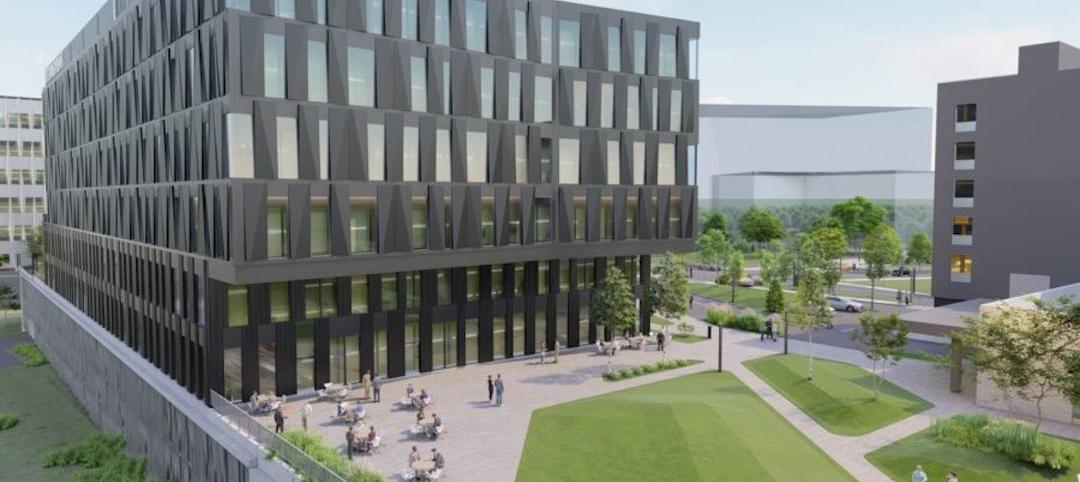Whether you agree with Frank Lloyd Wright’s definition of good architecture or not, the late architect was never anything less than resolute and unswerving in his convictions. If ever you needed evidence of this, look no further than PBS Digital and Quoted Studios’ Blank on Blank animated short featuring excerpts from an interview between Wright and Mike Wallace in 1957.
In the short six-minute video, Wright calls architecture of the past 500 years “phony,” says, if given another 15 years to work, he would rebuild the country and change the nation, and casts aspersions on the New York City skyline calling it a “great monument to money and greed.” Wright certainly doesn’t hold anything back in this interview, but before anyone gets any ideas to call him arrogant, he has a few choice words for you too. “I think any man who really has faith in himself will be dubbed arrogant by his fellows,” Wright says. “I think that’s what happened to me.”
Wright’s interview on The Mike Wallace Show took place when he was 90 years old, just two years before his death. At this point in his life, Wright had designed over 1,000 buildings and had seen over 500 of them come to fruition, but even with so much work under his belt, Father Time was the only thing slowing the 90-year-old architect down and hindering him from accomplishing more.
Returning to his idea of changing the country, Wallace quoted Wright as previously saying, “If I had another 15 years to work, I could rebuild this entire country. I could change the nation.” Wright confirmed that he said this saying, “It’s amazing what I could do for this country. I wouldn’t start to change so much the way we live, as what we live in and how we live in it.”
Wright wasn’t the only architect featured in a Blank on Blank video. A 1965 interview between architect Buckminster Fuller and Studs Terkel was also turned into an episode.
Fuller’s interview isn’t quite as provocative as Wright’s, but he shares some of the same ideas as Wright regarding the current state of architecture. “I saw that the way in which we built was very, very ignorant,” Fuller says.
The rest of the video gives some insight into how and why Fuller developed his architectural style and philosophy.
Both videos act as windows into the minds and imaginations of two architects with very unique and very ambitious ideas for what architecture could and should be.
According to Quoted Studios, its purpose in creating these animated videos from interviews, such as this one featuring Wright and Wallace, is to unlock hidden stories. “Whether they’re interviews sitting on a journalist’s tapes or in a major archive, recordings buried in a media brand’s archives, or the yet to be heard stories within an organization, we transform raw, intimate storytelling into culturally resonant digital content,” the company writes on its website.
Other notable figures featured in the Blank on Blank series include Rod Serling, Ayn Rand, Ray Bradbury, and Carl Sagan.
Related Stories
Sponsored | Steel Buildings | Jan 25, 2022
Structural Game Changer: Winning solution for curved-wall gymnasium design
Sponsored | Steel Buildings | Jan 25, 2022
Multifamily + Hospitality: Benefits of building in long-span composite floor systems
Long-span composite floor systems provide unique advantages in the construction of multi-family and hospitality facilities. This introductory course explains what composite deck is, how it works, what typical composite deck profiles look like and provides guidelines for using composite floor systems. This is a nano unit course.
Sponsored | Reconstruction & Renovation | Jan 25, 2022
Concrete buildings: Effective solutions for restorations and major repairs
Architectural concrete as we know it today was invented in the 19th century. It reached new heights in the U.S. after World War II when mid-century modernism was in vogue, following in the footsteps of a European aesthetic that expressed structure and permanent surfaces through this exposed material. Concrete was treated as a monolithic miracle, waterproof and structurally and visually versatile.
Urban Planning | Jan 25, 2022
Retooling innovation districts for medium-sized cities
This type of development isn’t just about innovation or lab space; and it’s not just universities or research institutions that are driving this change.
Sponsored | Resiliency | Jan 24, 2022
Norshield Products Fortify Critical NYC Infrastructure
New York City has two very large buildings dedicated to answering the 911 calls of its five boroughs. With more than 11 million emergency calls annually, it makes perfect sense. The second of these buildings, the Public Safety Answering Center II (PSAC II) is located on a nine-acre parcel of land in the Bronx. It’s an imposing 450,000 square-foot structure—a 240-foot-wide by 240-foot-tall cube. The gleaming aluminum cube risesthe equivalent of 24 stories from behind a grassy berm, projecting the unlikely impression that it might actually be floating. Like most visually striking structures, the building has drawn as much scorn as it has admiration.
Sponsored | Resiliency | Jan 24, 2022
Blast Hazard Mitigation: Building Openings for Greater Safety and Security
Coronavirus | Jan 20, 2022
Advances and challenges in improving indoor air quality in commercial buildings
Michael Dreidger, CEO of IAQ tech startup Airsset speaks with BD+C's John Caulfield about how building owners and property managers can improve their buildings' air quality.
Architects | Jan 17, 2022
OSPORTS adds Robert Hayes to lead operational and business development efforts
Hayes will guide the OSPORTS organization in its mission to offer a unique perspective to designing world-class facilities.
Architects | Jan 13, 2022
Hollywood is now the Stream Factory
Insatiable demand for original content, and its availability on a growing number of streaming platforms, have created shortages — and opportunities — for new sound stages.
Architects | Jan 13, 2022
Robert Eisenstat and Paul Mankins receive 2022 AIA Award for Excellence in Public Architecture
The award recognizes architects, public officials, or other individuals who design distinguished public facilities and advocate for design excellence.

















